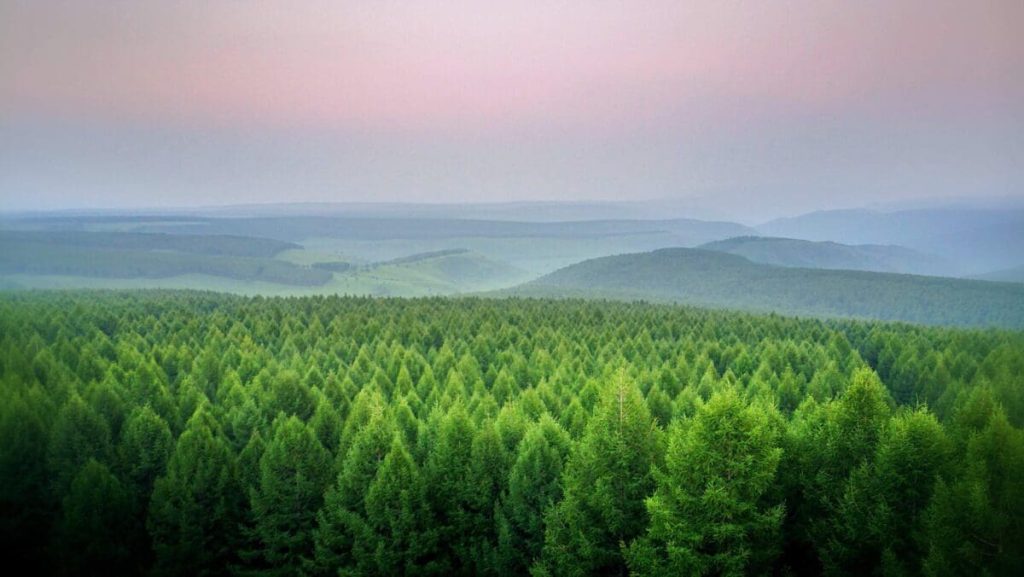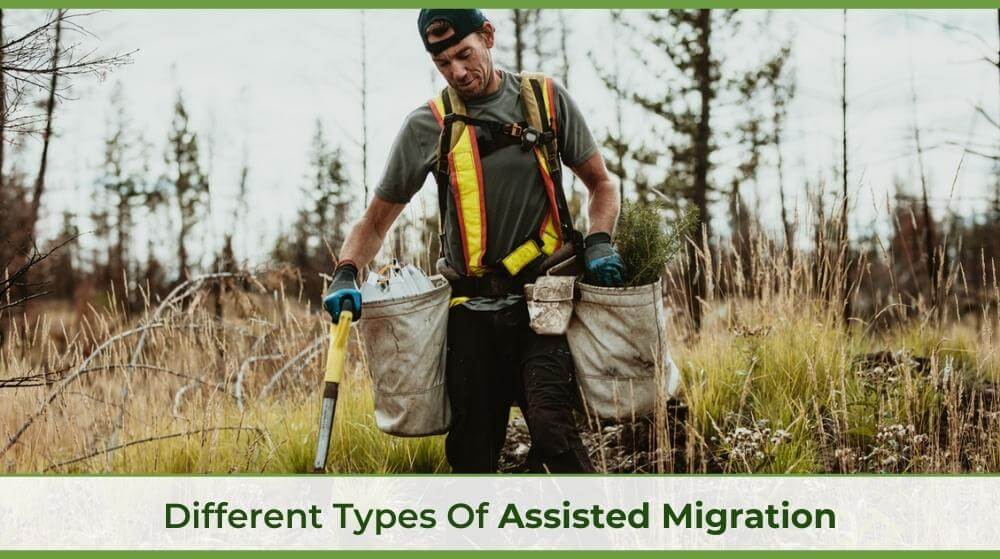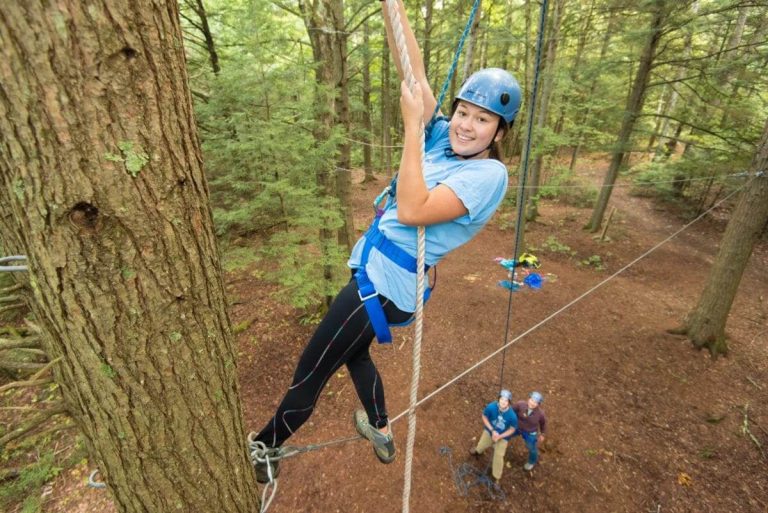

Human encroachment and the effects of climate change are threatening forests and species in the U.S. and worldwide. With assisted migration, scientists and foresters help species and trees move to different areas to improve the health of the organisms and overall ecosystems.
Whether a lucky seed dropped by a passing bird or a sapling planted by a forester, all trees took a journey to get to their current location. While trees traveled by their own means for millennia before us, climate change presents challenges requiring the assistance of people. Human strategies to assist tree migration are one tool in our climate change arsenal.

Learn to use assisted migration in your climate change career with a master’s in climate change adaptation and resilience.
Understanding Assisted Migration
The basis of assisted migration has existed as long as humans have roamed the earth, purposely or unknowingly spreading plants and seeds as we went. Modern assisted migration is an effort to accelerate tree and plant growth and regeneration in a strategic manner beneficial to the ecosystem. Plant migration is vital to sustainable ecosystems and food production, but for this article, we are focusing on tree migration.
Assisted tree migration includes planting trees in an area where they did not previously grow or expanding an existing range of native trees. It is often used to combat deforestation and restore forests after wildfires. However, moving trees to new areas could cause unexpected problems in the ecosystem, such as the introduction of foreign insects and plant diseases. That is why skilled scientists and nature conservationists must lead assisted migration efforts. They do thorough research to predict the results of human-assisted tree migration before it occurs and plan for the margin of error.
Executing assisted migration efforts involves many different government agencies and workers, including:
- The Forest Service
- Local governments
- State governments
- Native tribes
- Forestry technicians
- Park rangers
Types Of Assisted Migration
Assisted migration is sometimes used to refer to assisted animal migration or plant migration. In the forestry field, assisted migration usually refers to tree migration. There are three types of assisted tree migration:
- Assisted population expansion
- Assisted range expansion
- Assisted species migration
Often all three tactics are used in wildlife management and reforestation efforts. In particular, a combination of these strategies can be used to increase the biodiversity of a region. Biodiversity is threatened due to climate change, overlogging, and overhunting. Below we explain the benefits of each type of assisted migration in more detail with examples.
Assisted Population Expansion
Assisted population expansion is taking a current population of a species and helping it expand its numbers and density within its current territory. It also includes re-establishing trees in an area where they used to grow naturally in the past.
Assisted population expansion is very different from range expansion and species migration because trees aren’t being established in places where they haven’t naturally grown before. For this reason, population expansion is the most low-risk of the three types of tree migration. It’s often preferred because it uses only native species in an area.
Assisted Range Expansion
Assisted range expansion involves expanding the natural reach of the tree into nearby territories. This could include manipulating the lines between different ecosystems, such as the areas where a prairie or forest meets a city. Range expansion moves directly beyond the current territory of a forest or tree species but not to an unconnected area. For instance, in Minnesota where climate change is causing warmer forest conditions, forest service scientists are helping warm-adapted trees move their range north by slowing expanding their northern range.
Assisted Species Migration
Assisted species migration involves transporting species to places they would not naturally reach without human intervention. Species migration is the most high-risk type of human-assisted tree migration. It’s also the trickiest due to climate differences and invasive species management.
However, some scientists argue that it’s the best method to save certain species. Assisted species migration has been practiced in forestry for decades to varying degrees, but it has only more recently been used to mitigate the effects of climate change.

Interested in tree migration research? Consider a master’s in climate change adaptation and resilience.
Can Trees Move On Their Own?
Yes! But not like you might think they can. All trees had to root themselves somewhere in the first place. The seeds from existing trees can be transported naturally in various ways. Here are some examples:
- Seeds being picked up by the wind and transported to a field miles away
- Squirrels forgetting about stashed acorns in the ground that eventually take root
- A person stepping on seeds on a hike and unknowingly carrying them to a new location
- A flood carrying seeds down a riverbed
Trees are interdependent on other players in the ecosystem to survive, multiply, and thrive. With climate change threatening resources like rainfall, the usual ecological patterns that sustain species are faltering. This is altering the ecology of the land. Therefore, letting trees move naturally on their own is no longer enough to sustain our planet. Humans can assist in trees moving in healthy ways.
How Do Trees Walk?
It’s fun to picture large walking trees carrying tiny hobbits, but the reality of traveling trees is just as neat. Through the study of historical patterns, foresters can observe how large strands of trees can crawl or recede into different areas. Scientists are beginning to accept that trees have the ability to communicate or share resources through mycelial networks or root system. This can include communicating information about potential threats like droughts.
Trees can move on their own, but on a time and scale of their own in order to preserve their species. We will never see trees walk, but they do migrate very slowly over hundreds or thousands of years. Human-assisted migration is needed because this natural migration is not fast enough to keep up with changes caused by deforestation and climate change.
Limitations And Challenges Faced By Trees Migrating
Critics of assisted migration worry about the long-term effects. Historically, human efforts to introduce species into non-native areas have led to disasters like the unintentional introduction of the spotted lanternfly which is spreading westward across the U.S.
There is an urgency to address diminishing biodiversity under the looming threat of the climate crisis, but it must be done carefully to prevent unintended consequences. Many environmental scientists believe that traveling trees is not a perfect solution to the effects of climate change, but it may be the best option we have right now. To study the sustainability of forests and be on the cutting edge of new solutions, get a degree in environmental science.
Assisted migration to combat climate change has only gained popularity in the U.S. in the past few years, and its limitations are still being discovered. The next generation of tree migration scientists will need to ask themselves:
- How can we ensure newly introduced species don’t become invasive?
- How can we encourage warm-weather trees and plants to migrate north faster?
- How can we ensure newly introduced species don’t bring new diseases or pests to the area?
- How can we sustainably harvest and transport seeds from struggling species in large quantities?
- How can we leverage technology to increase the efficiency and efficacy of our tree migration efforts?
Explore Our Programs That Can Start Your Forestation Career Journey
Can trees move? Yes, trees have been spreading to new areas naturally throughout history. However, human-caused deforestation and climate change threaten the survival of many species of trees. Assisted migration is now essential to sustaining our forests long-term. This includes species expansion, range expression, and species migration. More experts in climate change adaptation and resilience and forest rangers are needed to understand how to use these three types of assisted migration as climate change worsens.



